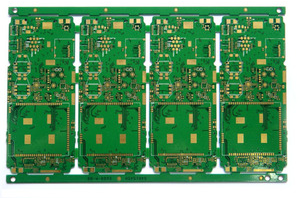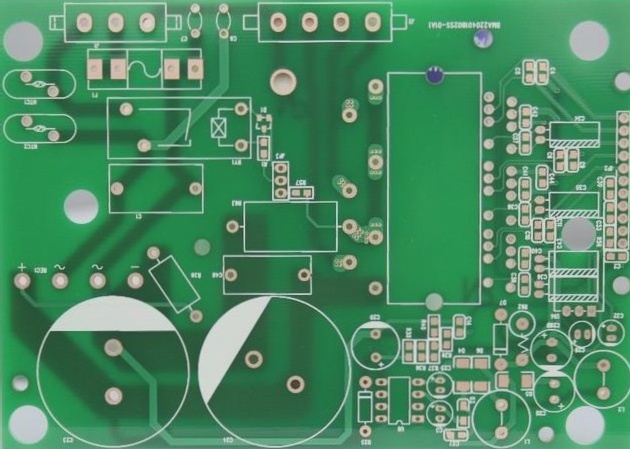1. How much do you know about the process of SMT patch processing? SMT processing can be divided into two main processes: single-sided patch processing and double-sided patch processing. These two processes differ in several aspects.
2. Taking the single-sided SMT patch assembly as an example, the process is generally carried out in the following order: incoming inspection, silk-screening solder paste, patching, drying, reflow soldering, cleaning, inspection, and repair. Misunderstandings can occur during SMT chip processing, such as improper soldering techniques.
3. There are two methods to complete the double-sided SMT patch assembly. The first method involves incoming material inspection, silk-screening solder paste on the A-side of the PCB, silk-screening solder paste on the B-side of the patch PCB, patching, drying, reflow soldering, cleaning, testing, and repair. This process completes the double-sided SMT patch assembly.
4. The second method involves incoming inspection of the PCB, silk-screening solder paste on the A-side, patching, drying, reflow soldering on the A-side, cleaning, flipping the PCB, applying solder paste on the B-side, patching, curing, wave soldering on the B-side, cleaning, testing, and repairing. This method is suitable for reflow soldering on the A-side of the PCB and wave soldering on the B-side, particularly when the B-side only contains SOT or SOIC pins.
5. SMT chip processing

1. In addition, there are single-sided mixed assembly processes and double-sided mixed assembly processes. The former starts with raw material inspection, followed by PCB A-side screen printing solder paste, patching, baking, reflow soldering, cleaning, plug-in, wave soldering, cleaning, inspection, repair, and other steps.
2. The latter involves more operational methods, which can be divided into five types. One is placing components first and then inserting, which is suitable for cases where there are more SMD components than through-hole components; the reverse process—first inserting and then placing—is suitable when there are more through-hole components than SMD components. For SMD components, there are three types: A-side mixed mounting and B-side mounting; double-sided SMD first, followed by reflow soldering, then inserting and wave soldering; and A-side mounting and B-side mixed mounting to meet various SMT mounting film requirements.
3. If the soldering force is increased, the heat conduction of the solder paste may improve, thereby increasing the amount of solder. However, the actual situation is often the opposite. Excessive soldering force can cause defects such as warping, delamination, and pad depression. The correct approach is to gently touch the soldering iron tip to the pad to ensure the quality of the soldering.
4. Temperature is a critical parameter for PCB soldering. Incorrect temperature settings can damage the circuit patch. Attention must also be paid during soldering operations: place the soldering iron tip between the pad and the pin, bring the solder wire close to the tip of the soldering iron, and move it to the opposite side when the solder melts.
5. I hope that by reading the above content, you will understand the correct use of soldering in Wuxi SMT patch processing. The information provided is just a few precautions for controlling SMT patch processing operations. Additionally, there are other important considerations, but in summary, mastering processing points and adhering strictly to specifications is essential.
2. Taking the single-sided SMT patch assembly as an example, the process is generally carried out in the following order: incoming inspection, silk-screening solder paste, patching, drying, reflow soldering, cleaning, inspection, and repair. Misunderstandings can occur during SMT chip processing, such as improper soldering techniques.
3. There are two methods to complete the double-sided SMT patch assembly. The first method involves incoming material inspection, silk-screening solder paste on the A-side of the PCB, silk-screening solder paste on the B-side of the patch PCB, patching, drying, reflow soldering, cleaning, testing, and repair. This process completes the double-sided SMT patch assembly.
4. The second method involves incoming inspection of the PCB, silk-screening solder paste on the A-side, patching, drying, reflow soldering on the A-side, cleaning, flipping the PCB, applying solder paste on the B-side, patching, curing, wave soldering on the B-side, cleaning, testing, and repairing. This method is suitable for reflow soldering on the A-side of the PCB and wave soldering on the B-side, particularly when the B-side only contains SOT or SOIC pins.
5. SMT chip processing

1. In addition, there are single-sided mixed assembly processes and double-sided mixed assembly processes. The former starts with raw material inspection, followed by PCB A-side screen printing solder paste, patching, baking, reflow soldering, cleaning, plug-in, wave soldering, cleaning, inspection, repair, and other steps.
2. The latter involves more operational methods, which can be divided into five types. One is placing components first and then inserting, which is suitable for cases where there are more SMD components than through-hole components; the reverse process—first inserting and then placing—is suitable when there are more through-hole components than SMD components. For SMD components, there are three types: A-side mixed mounting and B-side mounting; double-sided SMD first, followed by reflow soldering, then inserting and wave soldering; and A-side mounting and B-side mixed mounting to meet various SMT mounting film requirements.
3. If the soldering force is increased, the heat conduction of the solder paste may improve, thereby increasing the amount of solder. However, the actual situation is often the opposite. Excessive soldering force can cause defects such as warping, delamination, and pad depression. The correct approach is to gently touch the soldering iron tip to the pad to ensure the quality of the soldering.
4. Temperature is a critical parameter for PCB soldering. Incorrect temperature settings can damage the circuit patch. Attention must also be paid during soldering operations: place the soldering iron tip between the pad and the pin, bring the solder wire close to the tip of the soldering iron, and move it to the opposite side when the solder melts.
5. I hope that by reading the above content, you will understand the correct use of soldering in Wuxi SMT patch processing. The information provided is just a few precautions for controlling SMT patch processing operations. Additionally, there are other important considerations, but in summary, mastering processing points and adhering strictly to specifications is essential.



